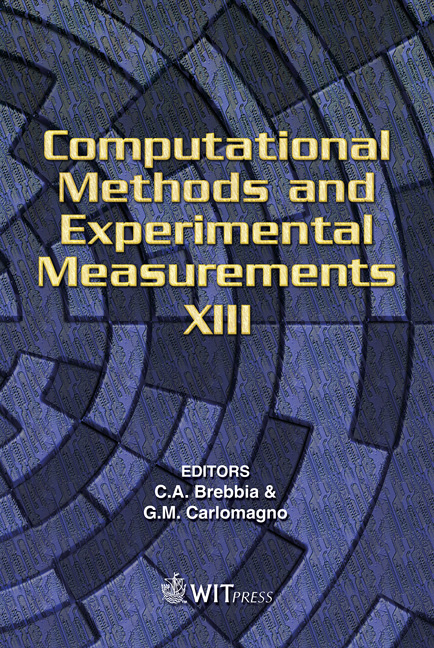Computational Simulation Of The Effect Of Crystallization Inhibitors On Salt Transport And Crystallization In Porous Materials
Price
Free (open access)
Transaction
Volume
46
Pages
9
Published
2007
Size
379 kb
Paper DOI
10.2495/CMEM070381
Copyright
WIT Press
Author(s)
J. Kelnar, J. Maděra & R. Černý
Abstract
Computational simulation of salt transport and crystallization in limestone depending on the presence of crystallization inhibitor in the dissolved salt is presented. The diffusion-advection model is used for the basic description of coupled water and salt transport, taking into account both water movement due to the moisture gradient and diffusion and dispersion effects within the liquid phase due to the concentration gradient. Salt crystallization in the porous body is modelled using an equilibrium model, taking into account the effect of crystallization inhibition. The effect of salt bonding on the pore walls is taken into account as well. The results of numerical simulations using a well calibrated computational model give evidence that in the analyzed case the use of crystallization inhibitors leads to the slowing down of both water and salt transport. Keywords: salt, moisture, transport, crystallization, computer simulation. 1 Introduction The mathematical analysis of experimentally determined salt concentration profiles depends on the assumed mode of salt transport in the porous material. If purely diffusion transport is assumed, common methods for solving the inverse problems for parabolic equations can be used. The simplest method makes the assumption that the diffusion coefficient is constant, the domain under solution is semi-infinite, and the boundary condition on the remaining side of a
Keywords
salt, moisture, transport, crystallization, computer simulation.





